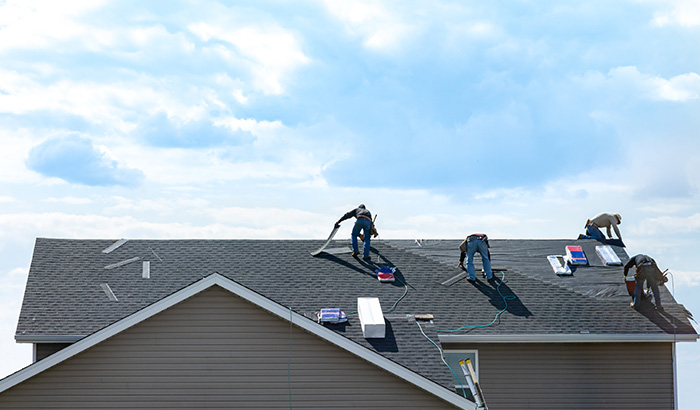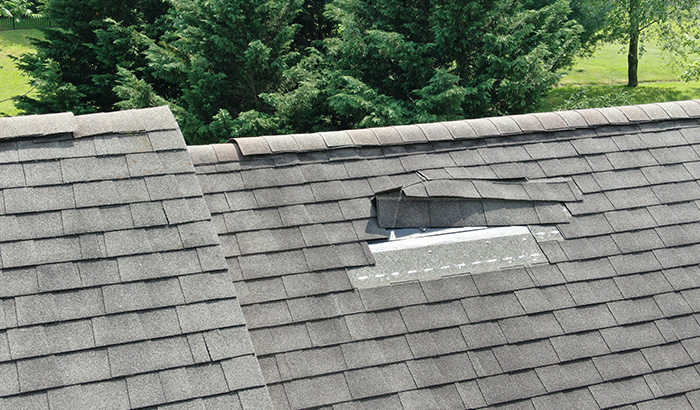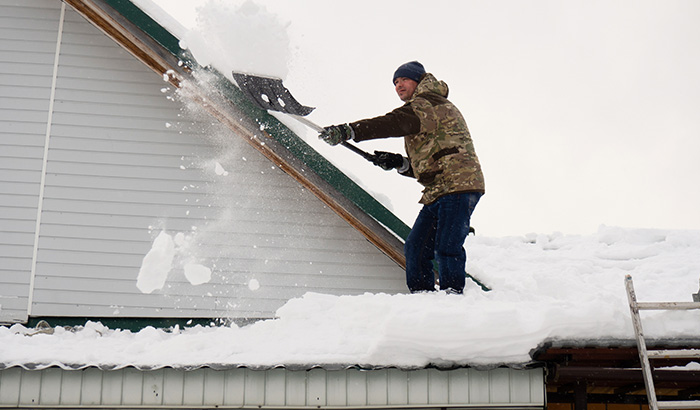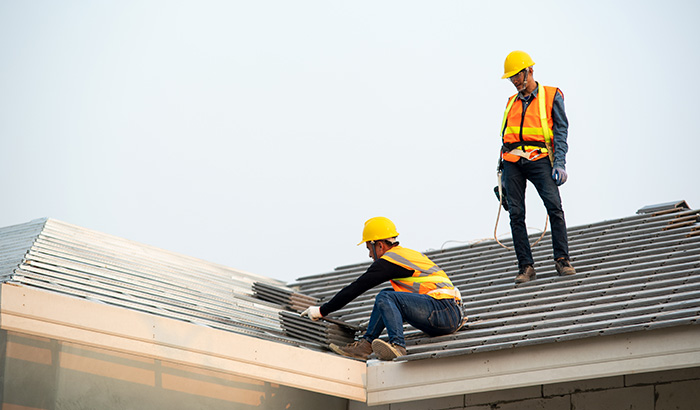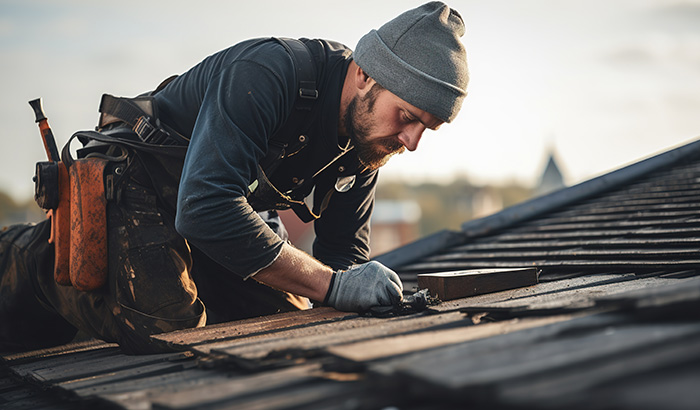Regardless of what your roof is made of, say an asphalt shingle roof, most homeowners want to know how long it will last.
One of the biggest responsibilities of being a property owner is the ongoing maintenance, repairs, and care of your home, and the roof component of the house is no different. A reliable, durable, and sturdy roof is crucial to protecting your home, loved ones, and personal belongings.
When it comes to roofing materials, how long they can last is anywhere between ten and sixty years— as you can see, there is plenty of room for some types of materials to perform better (or worse) than other kinds. This means deciding which type of roof you want for your home is essential. Making the wrong decision could cost you tens of thousands of dollars.
Today’s the day we’re diving deep into the world of shingle roofs! It’s super important for homeowners to get the full scoop on this. We’re talking about everything you need to know, from how long these roofs usually last to when you should start thinking about getting a new one. We’ll also share some interesting facts and tips about shingle roofs.
So, buckle up and get ready to become a shingle roof whiz! We’ve got lots to cover, and by the end of this, you’ll be clued in on all things shingle roof.
Continue reading to learn more.
The Shingle Roof
Shingles are rectangular, flat pieces of asphalt or other types of roofing material; they are applied to the roof from its base, next to where the gutter goes, and upwards, overlapping to get full coverage.
When it comes to shingle roof material, many types of materials are used to make shingles, such as wood, concrete, slate, metal, and, as previously mentioned, asphalt, a highly popular choice among homeowners. We will look at the various types of materials as we answer all of your questions.
How Long Does an Asphalt Shingle Roof Last?
For over 100 years, asphalt shingles have been one of the most commonly used roofing materials for residential properties. An asphalt roof’s expected lifespan can be between 15 and 30 years. A longer lifespan can be achieved by taking preventive measures, staying on top of roof repairs, and implementing other types of care.
Your area’s climate and weather conditions play a huge role in the lifespan of your asphalt shingle roof. Extreme temperatures and harsh weather, especially in hot and humid climates, significantly impact this type of shingle. Regardless of where you live, if you see signs of damage, such as missing or deteriorating shingles, it is essential to the health and wellness of your roof to schedule repairs so that you can make the most of your roof’s expected lifespan.
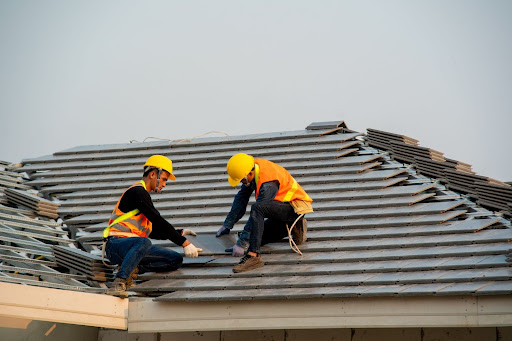
There are different types of asphalt shingles. While they all fall within a specific timeframe, the different types of asphalt shingles have various features that affect their life expectancy. Here’s what you need to know:
- 3-Tab Shingles — The most cost-effective shingle lasts between 15 and 30 years.
- Architectural Shingles — Also referred to as dimensional shingles, these are mid-range priced and last between 20 and 30 years.
- Premium Shingles – Boast the highest price tag and should last between 25 and 40 years.
With proper care and regular maintenance, your asphalt shingle roof can get the most of its expected lifespan (more on this later). However, if you do not prioritize preventative care and maintenance, you may be required to get a full roof replacement far sooner than expected.
Other Types of Shingle Roofs
While asphalt shingles are one of the most common shingle roof material types, there are other types of shingles to consider. Other types of material ranges include:
- Metal Roofs — Roughly 40 to 70 years
- Wooden Shingles — Give or take 30 years
- Slate Tile — A whopping 75 to 200 years
- Clay Tile — About 50 to 100 years
Simply looking at these numbers, you may think that asphalt shingles do not last as long as the other types of roofs. It is important to remember that metal, wood, slate, clay, and different kinds of shingles come with other challenges, such as maintenance and upkeep. This results in a great cost over time. Moreover, many of these other types have a higher initial cost.
Factors that Affect the Lifespan of a Shingle Roof
Many factors can affect the lifespan of a shingle roof. Here are some:
- Quality of Shingle Roof Material — Shingles provide a durable layer of protection from the sun, rain, and other environmental elements. As outlined above, the various types of shingles have varying lifespans. But in addition to that, the level of quality within those specific types directly affects how long your roof will last. If you want your roof to last, consider investing in a higher-quality shingle that can add years to the life of your roof.
- Installation is Important — To make the most out of your shingle roof, it’s crucial to have the installation done by a trusted and reputable roofing company. Unfortunately, not all roofing companies are created equally, and the workmanship and finesse are apparent. Mistakes made by inexperienced, lazy, or unqualified contractors can negatively impact the lifespan of your roof.
- Maintenance Schedule — Staying on top of regular care and maintenance for your roof is one of the best ways to make the most of your shingle roof. Blowing off these responsibilities can drastically shorten its lifespan, shortening the time before you need a total shingle roof replacement. Hiring a reputable roofing contractor to inspect, maintain, and repair your roof is essential; unfortunately, DIY projects rarely go as planned. Some things should just be left to the pros.
- Local Climate — The weather and temperature of where you live significantly impact the health and wellness of your roof. Homes with asphalt shingle roofs in areas that reach extremely high temperatures year-round, like Arizona or California, typically have shorter lifespans. Homes in eastern and northern states usually find that they can see an asphalt roof lasting closer to two decades with regular maintenance.
- Inside Temperature — The temperatures inside your property can also affect your roof’s life expectancy. If the temperatures are too warm inside your house, mainly as a result of poor attic ventilation, this can also affect the integrity of the structure, making a shingle roof replacement a possibility.
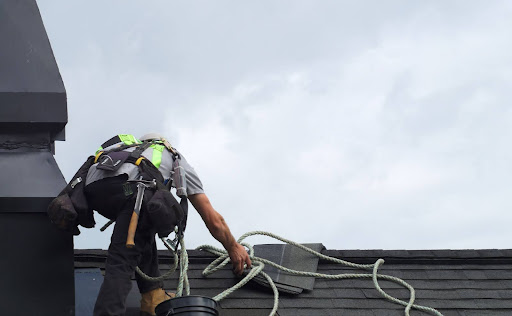
Things You Can Do to Help You Roof Last Longer
Unless you are Mother Nature, the weather is out of your control. Thankfully, there are other things you can control to help your roof last as long as possible. Here are five things you can do:
- Do Not Power Wash Your Shingles — You probably notice these tiny little beads on your shingles if you have an asphalt shingle roof. These are called granules and are an essential component of your shingles. They contribute to your roof’s aesthetic appeal, its ability to shed water, protect it from UV rays, and more.
Concentrated spray from a power hose can loosen these oh-so-important granules, resulting in damage that may not be covered by your roof’s warranty. Instead, hire a professional (for safety reasons) to use a broom and leaf blower. - Check Your Roof’s Ventilation — Attic soffits, exhaust fans, and inadequate or poorly located vents can cause condensation on the plywood decking that supports your shingles, which can result in rot.
If this isn’t something you feel confident determining yourself, don’t worry. You can hire a contractor to check your system, suggest solutions, and make repairs. This can save you time, money, and so many headaches down the road. - Clean Your Gutter System Regularly — Rain gutters are an essential part of your property and a key piece in ensuring your home does not suffer water damage. Between rain, wind, pests, and more, rain gutters can become full of leaves, nests, twigs, trash, and other debris that could result in a malfunction of your gutter system.
Ensure your gutters can work well by cleaning them regularly. You can do this job yourself if you have the skills and equipment, but we recommend hiring a professional to do the dirty work for safety reasons. - Properly Insulate Your Attics and Cathedral Ceilings — Correctly insulating your attic and any cathedral ceilings in your house can help prevent ice dams, resulting in expensive leaks and water damage, especially in areas where roofing planes come together. Lighting in these areas can also have an impact.
Ideally, when the top layer of snow melts on your roof, it should drip off. But when recessed lighting in your cathedral ceiling or your attic isn’t properly insulated, the heat can melt the snow from beneath. If the moisture is trapped, it can leak through nail holes and destroy the roof decking. - Fortify Your Roof — Homeowners living in areas prone to extreme weather, such as tornadoes, hurricanes, and thunderstorms, may want to consider investing in fortifying their roofs.
It typically involves three steps: first, installers seal decking. Second, they’ll use ring-shank nails that feature ribbing to resist wind uplift. Lastly, they will look down the edges with metal flashing.
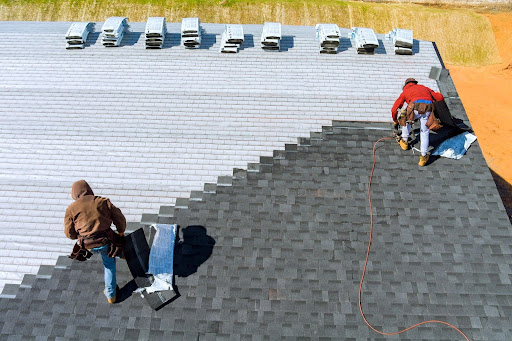
When To Replace a Shingle Roof
As a property owner, knowing when to replace your roof is key. Understanding this information can help you avoid serious issues down the line, such as water damage, mold or pest infestations, and, in extreme cases, cave-ins. Here are seven potential signs that your roof could need to be replaced:
- Damaged Shingles — A handful of damaged shingles does not mean you need to get your roof replaced. However, if the majority of your shingles’ edges are curled or lifted, your shingle tabs are cupping, or the majority are severely cracked, it could be time to replace your roof.
- Missing Granules — As mentioned above, granules are a critical part of your shingles, and when they are missing from the majority of your asphalt shingles, things aren’t looking good, and it may be time to replace your roof.
- Missing Shingles — Missing shingles expose your property to various potential dangers, such as water, debris, and pests that can destroy your roof deck. Repairs may fix the issue; however, if it’s too much, a roof replacement may be necessary.
- Age and Look — If your roof is at least 20 years old or looks tired, old, and worn out. It could be time to replace your roof. If the neighbors whose houses were built at the same time as yours are starting to get new roofs, it’s probably time for you to get a new roof.
- Moss, Mold, or Mildew Growth — Mold, moss, and mildew can grow on roof surfaces that don’t get a lot of sunlight, especially in moist, cool climates. In addition to moss growth being a cosmetic issue, it can also hold moisture to the roof’s surface, causing damage to the granules and other parts of your roof over time. If your roof is growing things, it could be time to replace your roof or at least chat with a professional roofing contractor.
- Sagging Roof — A sagging roof could be the result of a faulty installation where new shingles were placed on your old ones, adding excess weight to your roof structure.
Need Help With Your Shingle Roof? We Do Roofing Salt Lake City Can Help!
Whether your shingle roof needs an inspection, repair, replacement, or something else, the reputable team at We Do Roofing Salt Lake City is here for you.
The licensed roofing team at We Do Roofing SLC is Northern Utah’s most reliable and trusted roofing team. With over 20 years of experience, We Do Roofing provides expert roof inspections, new construction roofs, repairs, re-roofing, and so much more for all residential and commercial properties in Salt Lake County.
Our team of experts is here to answer all of your questions about roof inspection, repair, and any replacement options. We are here to help you feel comfortable every step along the way. Our qualified crew serves those in Salt Lake City, Murray, West Jordan, Millcreek, West Valley City, and many other surrounding cities in Northern Utah.
Contact We Do Roofing SLC for your quick quote on a shingle roof today!

